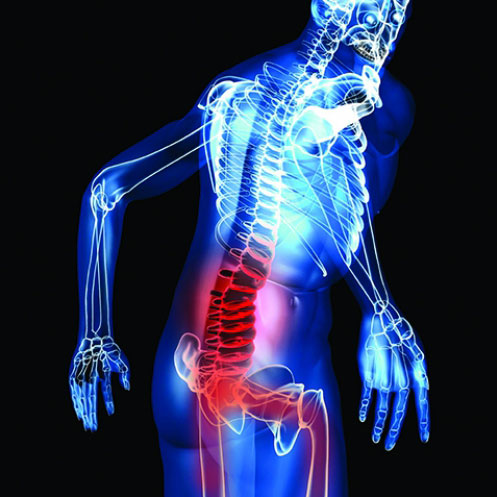
Corrective Exercise Guide for Anterior Pelvic Tilt
Anterior pelvic tilt (APT) is a common postural imbalance where the pelvis tilts forward, causing exaggerated curvature in the lower back. This can lead to discomfort, reduced athletic performance, and long-term issues if left uncorrected. Corrective exercises and proper assessments are essential for addressing this condition. W.I.T.S. does have a helpful series of Corrective Exercises in its webinar series store. Check out Corrective Exercise Four-Day Mini-Course at www.witseducation.com
What is Anterior Pelvic Tilt?
APT occurs when there is an imbalance between muscle groups at the hip and lower back. Tight hip flexors and lower-back muscles, coupled with weak glutes and abdominals, pull the pelvis into a forward tilt.
Common Signs of APT Include:
- Excessive lower back arch (hyperlordosis)
- Protruding abdomen despite a healthy weight
- Tightness in the hip flexors
- Discomfort or stiffness in the lower back
How to Assess Anterior Pelvic Tilt
Before starting any corrective exercises, assess your posture to confirm the extent of your pelvic tilt. Here are two simple assessment tests:
1. The Mirror Test
Stand in front of a full-length mirror in a natural posture. Look for the following indicators of anterior pelvic tilt:
- Your pelvis tilts forward (the front of your pelvis may visibly drop lower than the back).
- There’s a pronounced arch in your lower back.
- Your buttocks may appear more prominent due to the tilt.
2. Thomas Test for Tight Hip Flexors
The Thomas Test is helpful for evaluating tightness in your hip flexors:
- Sit at the edge of a flat surface (e.g., a bench or bed) and pull one knee toward your chest.
- Lean back while holding the knee and allow the opposite leg to hang down naturally.
- Observe the position of the hanging leg. If the knee is unable to drop below the edge of the surface or stays raised, this indicates tight hip flexors.
Corrective Exercises for Anterior Pelvic Tilt
The following exercises target weak and overactive muscles to restore balance in the pelvic region.
1. Plank Variations
Planks build core strength to stabilize your pelvis and spine.
How to Perform a Basic Forearm Plank:
- Begin in a forearm plank position, keeping your elbows directly under your shoulders.
- Engage your core to keep your back flat and hips level. Avoid arching or sagging.
- Hold the position for 20-30 seconds to start, gradually increasing as your core strengthens.
Progression Tip: Add side planks to strengthen the obliques, further supporting neutral pelvic alignment.
2. Hip Flexor Stretch
Stretching tight hip flexors helps combat the forward pull on your pelvis.
How to Perform a Basic Hip Flexor Stretch:
- Kneel on your right knee with your left foot forward in a lunge position.
- Keeping your upper body upright, gently shift your hips forward until you feel a stretch in the front of your right hip.
- Hold the position for 20-30 seconds and switch sides.
Form Check: Avoid overextending your lower back while performing this stretch; maintain a neutral spine.
3. Glute Bridges
Strong glutes play a key role in stabilizing the pelvis.
How to Perform Glute Bridges:
- Lie on your back with your knees bent and feet flat on the floor, hip-width apart.
- Press through your heels to lift your hips until your body forms a straight line from shoulders to knees.
- Squeeze your glutes at the top, hold for 2-3 seconds, and lower back down.
- Perform 10-15 repetitions for 2-3 sets.
Advanced Variation: Add a resistance band around your knees to engage your glutes further.
Structuring Your Routine
Integrating the above exercises into your weekly fitness routine can produce noticeable improvements quickly. Start with 2-3 sessions per week, leaving at least a day of rest in between. Pair the exercises with proper ergonomic practices, like maintaining a neutral sitting posture and avoiding prolonged hip flexion activities.
When to Seek Professional Help?
While these exercises can address common APT symptoms, consulting with a trained professional, such as a physical therapist, might be necessary if you experience persistent pain or difficulty performing daily activities. They can provide a tailored corrective program to meet your unique needs.
Correcting anterior pelvic tilt takes consistency and awareness. By implementing these assessments and exercises into your routine, you’ll take an important step toward better posture, reduced discomfort, and improved movement efficiency.
